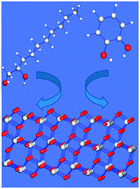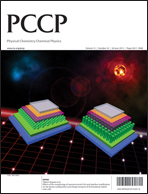Unraveling the adsorption mechanism of aromatic and aliphatic diols on the TiO2 surface: a density functional theory analysis
Abstract
Understanding the adsorption mechanism of organic molecules on inorganic semiconductors is of great importance for generating and control functions in organic–inorganic materials. Here we have comprehensively investigated, by means of the density functional theory, the adsorption structure and energetic stability of aliphatic and aromatic diols on TiO2 using ethylene glycol, 1,2-n-decanediol, and catechol. Our calculations clearly show that the non-dissociative bidentate adsorption is more stable than the dissociative one for the aliphatic diol, both at low and high coverage conditions, result far differently from many other chemical anchor cases for which the dissociative mechanism usually prevails. On the other hand, for catechol the dissociative bidentate is the most stable at low coverage conditions, whereas, surprisingly, increasing the coverage with catechol makes the non-dissociative mechanism the most stable one, revealing possible coexistence of a dissociative and non-dissociative anchoring at high coverage. This work unraveled a variety of adsorption fashions of the diol compounds in conjunction with the impact of the coverage effect, highly dependent on the nature of the lateral chain of the anchor group.


 Please wait while we load your content...
Please wait while we load your content...